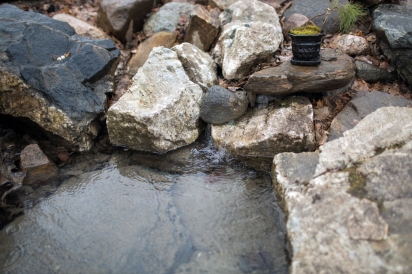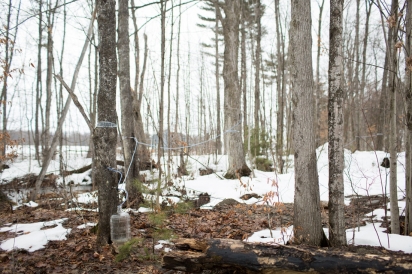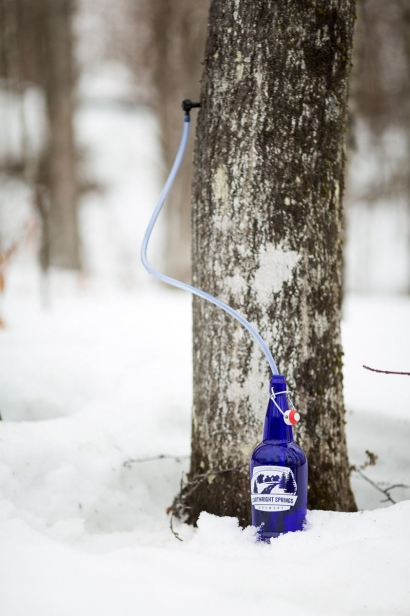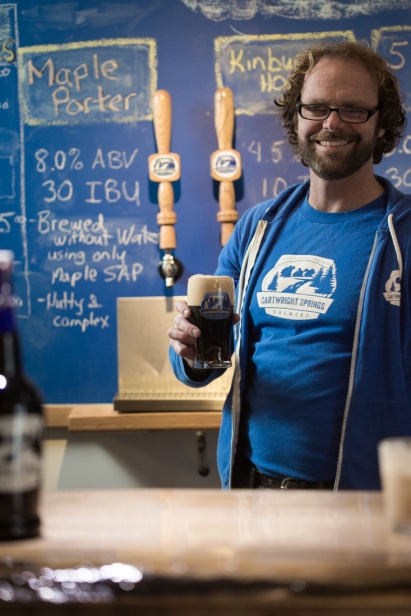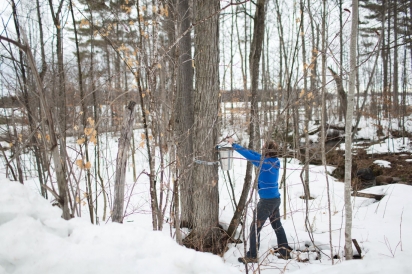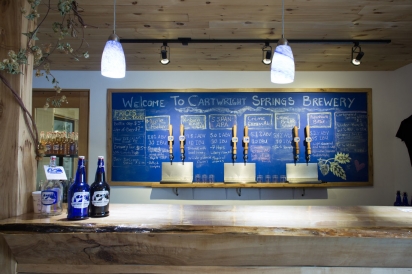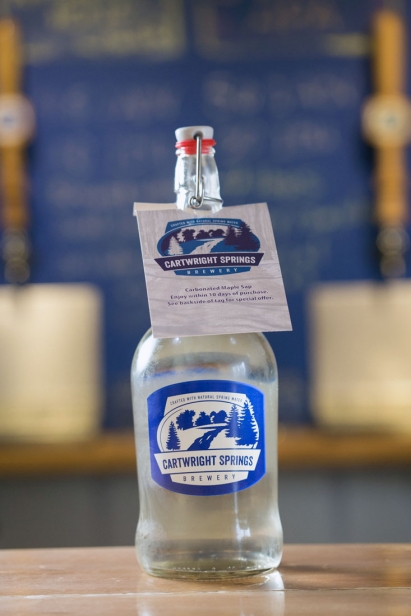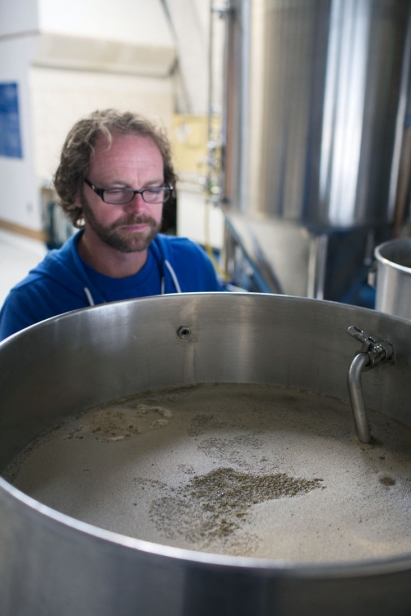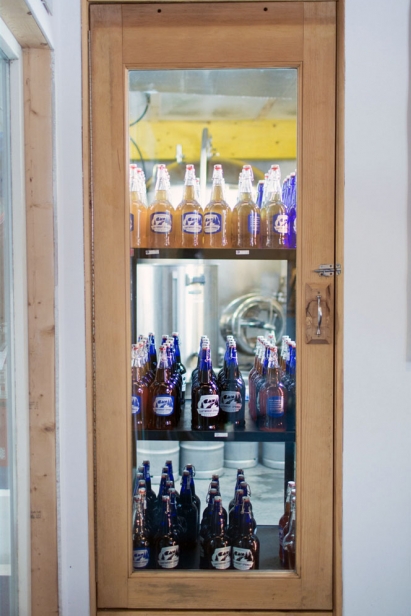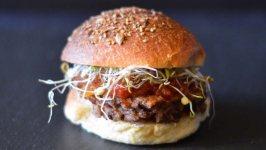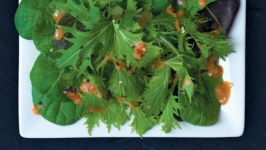A Spring Runs Through It
When he first laid eyes upon the spring, André Rieux knew he’d stumbled onto something big.
“I’m not kidding you, I got shivers,” recalls Rieux, the owner and brewmaster at Cartwright Springs Brewery. “I knew what I’d found. It was basically a goldmine coming out of the ground.”
For the past three years, the former high-tech worker has been turning that metaphorical goldmine into literal golden ales — and all sorts of other of colours and styles, too — inside a quonset hut tucked away on a forested road a few kilometres outside Pakenham, Ont.
Like many craft brewers these days, Rieux is a believer in sourcing his ingredients as close to home as possible and the class five artesian spring burbling past his brewery has influenced almost every decision he’s made since leaving his day job in 2013 to brew beer for a living.
“Finding the spring water was the culminating factor in all of these ideas I had in the back of my head,” Rieux says. “I did have an idea of starting a brewery, but it didn’t really amount to anything until I found the source of the water.”
The difference is in the water
When drinkers try to dissect what they like about a particular beer, they usually focus on the hops, the yeast and the brew’s malt profile.
But at its core, any beer — from an American lager quaffed at the ballpark to a Belgian quadrupel savoured in front of a fire — is nine-tenths water. And the composition of that water, from its mineral content to its pH balance, can have both subtle and not-so-subtle influences on the flavour. (This has been true throughout history: The original IPAs were characterized in part by the mineral character of the water flowing through Burtonupon- Trent in England, while that classic Pilsner taste is heavily defined by the soft water in Plzen, Czech Republic.)
Rieux’s beers, therefore, can’t help but take on the characteristics of the nearby water — and that results in a distinct taste that sets Cartwright Springs’ brews apart from those made in the city.
“There are other things in [Ottawa’s] water that maybe this spring doesn’t have. There’s chlorine, bromine... I don’t have to filter anything out because it doesn’t have any of that in it to start,” Rieux says.
“All of the beers we make do have an underlying quality that people recognize. Most people just say it’s refreshing. So I kind of like that. I’m not the one who came up with that —it’s just customers repeatedly saying [it]. So I’m pretty sure that’s the water. It has nothing to do with the recipes.”
Those recipes include a crisp lager made with honey that Rieux procures from a beekeeper just up the road and another lager made with haskaps — tart blue berries that look like deflated footballs and are packed with antioxidants — grown on a farm near Sudbury. Another mainstay is his extra special bitter, or ESB, which Rieux mastered during his years as a homebrewer.
Then there’s the maple porter. While the springs are what makes Rieux’s brewery unique, it's not the only selling point — and that becomes readily obvious when you walk out the back door and swiftly end up staring at a dense grove of maple trees.
Every year since he opened, Rieux has been tapping those trees to make the beer. A strong dark ale (it clocks in at about 8.5 per cent alcohol) with “a bit of a nutty finish,” Rieux’s maple porter is also the only one of his brews that doesn’t make use of the springs. That’s because the sap runs so smoothly that he doesn’t need to — instead of water, the beer’s base is 100 per cent the liquid from his maple trees.
In fact, Rieux says, sometimes he’s left with so much after brewing day that he pasteurizes it, bottles it and sells it as carbonated maple sap.
The ecological footprint of brewing
The springs — which, Rieux proudly notes, yield four litres of water every second — have also forced him to think about the ecological footprint that comes with beer-making.
“Being so close to a natural spring, we’ve decided that the brewery needs to be extremely environmentally friendly. Because we’re so close to the raw material. It’s important to keep it clean,” Rieux says.
For one, that means no “harsh detergents” are used to clean the tanks. Instead, he’s in there with a pressure washer, scrubbing pads when he needs to get them ready for the next brew. He also doesn’t use traditional chemical sanitizers. Instead, he infuses the water with ozone, which in turn “demoleculizes” any unwanted yeasts or bacteria and keeps his brewing equipment sterile. (Take a whiff of the ozonated water and it smells just like static electricity.)
Rieux says all of those elements — the eco-friendly practices, the maple trees and the local water — have made the brewery one of eastern Ontario’s under-the-radar tourist draws. He says he’s had people come from as far away as Japan for brewery tours, with at least 20 people showing up each week during the busy season to check out the operation. It’s helped, he adds, that Lanark County has also promoted Cartwright Springs as one of the region’s top destinations.
And Rieux says he doesn’t expect to see interest in the brewery stop any time soon. “I think people really like to know where their drinks and their food are coming from,” Rieux says.
“It’s not limited to beer, right? It’s nice to know where your fresh produce is coming from. It’s nice to know that the farmer isn’t using pesticides. It’s nice to know that they use as many local supplies as they could.”
Cartwright Springs Brewery
239 Deer Run Rd., Pakenham, Ont.
csbeer.ca, 613.295.3377



